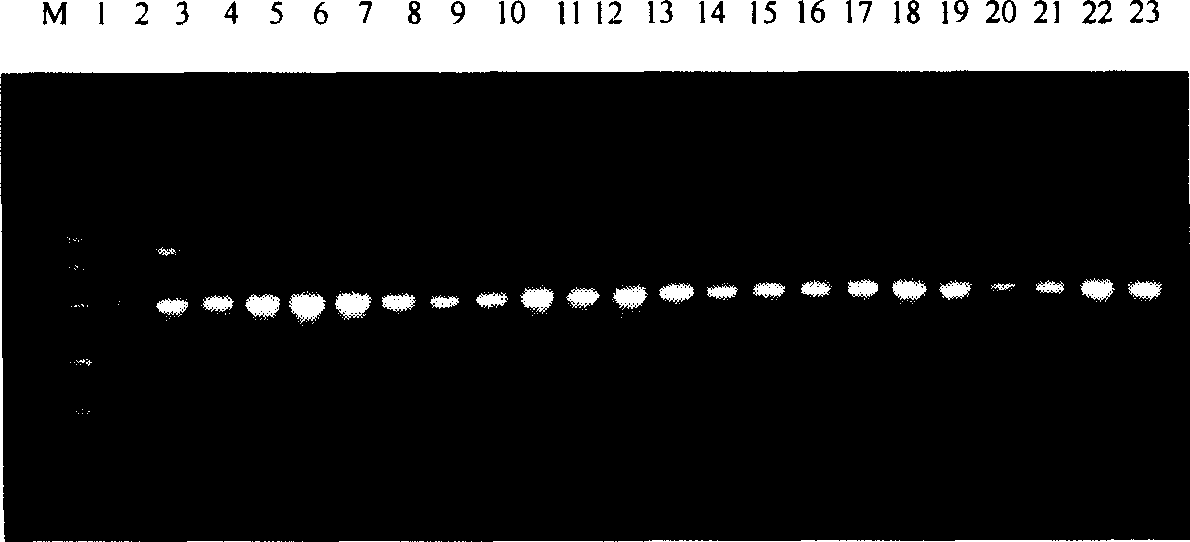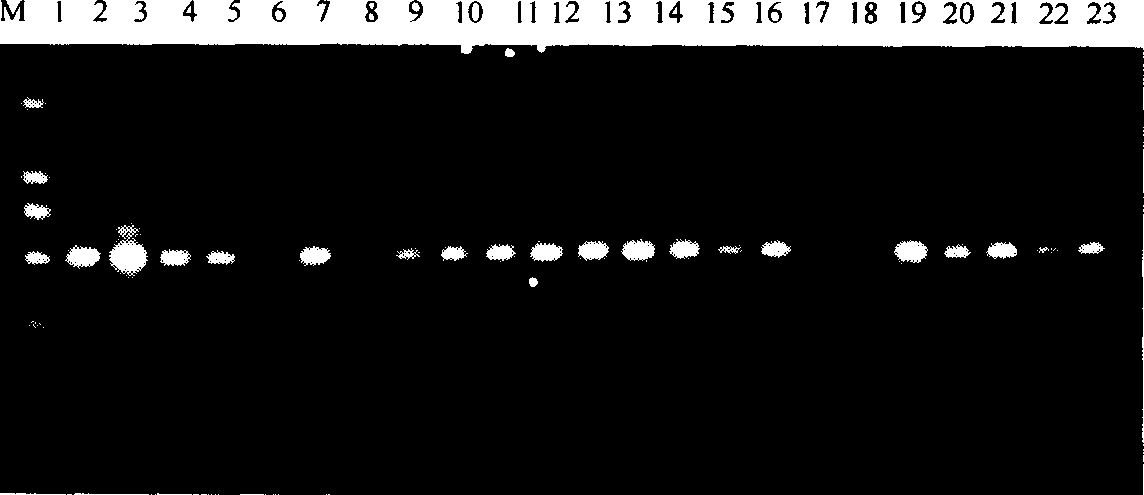Black spot disease resisting candidate gene sequence of dowing grape as one of China vitis wild species and use
A candidate gene, the technology of hairy grapes, applied in the fields of application, genetic engineering, plant genetic improvement, etc., can solve the problems of low hybridization efficiency, poor disease resistance, and limited application
- Summary
- Abstract
- Description
- Claims
- Application Information
AI Technical Summary
Problems solved by technology
Method used
Image
Examples
Embodiment 1
[0044] The Chinese wild grape grapes 83-4-96 and Shang-24, which were preserved in the grape germplasm resources garden of Northwest Agriculture and Forestry University, have been identified for their resistance to black pox (He Puchao et al., Chinese Agricultural Sciences, 1991; Wang Y et al, HortScience, 1998; Wang Y et al, Vitis, 1995) and 64 interspecific hybrid progenies of European grape pink rose and longan and 176 self-crossed progenies of disease-resistant hybrids were used as test materials. Genomic DNA was extracted by the improved CTAB method. According to the obtained Design specific primers for anti-black pox candidate gene sequences, carry out PCR amplification, according to the performance of specific DNA fragments in hybrid materials (Fig. 1, swimming lane 5-23; Fig. 28), contrast the anti-black pox field As a result of the identification, a DNA fragment closely linked with the anti-black pox gene of the grapevine and a DNA fragment of the anti-black pox gene w...
Embodiment 2
[0046] The wild species of Vitis vinifera Nanzheng-1, Taishan-12, 83-4-96 preserved in the grape germplasm resource nursery of Northwest Agriculture and Forestry University (He Puchao et al., Chinese Agricultural Sciences, 1991; Wang Y et al, HortScience , 1998; Wang Y et al, Vitis, 1995) were crossed with European grape varieties Seedless White, Royal Autumn, Kyoho, etc. to obtain hybrid plants resistant to black pox. The above-mentioned grape material genomic DNA was extracted by the improved CTAB method, primers were designed according to the DNA fragment closely linked with the anti-black pox gene obtained in Example 1, and the above-mentioned grape material genomic DNA was amplified by PCR. The hybrid materials of the fragments are black pox-resistant hybrid plants (Figure 29), or carriers of the black pox-resistant gene, which can be used as materials and breeding germplasm for further breeding of disease-resistant varieties.
Embodiment 3
[0048] Field natural identification and field inoculation identification were used to identify the resistance to black pox of the grape hybrid materials in Example 2, and to obtain disease-resistant hybrids and susceptible hybrids. According to the primers designed by the DNA fragment closely linked with the black disease resistance gene of the grapevine obtained in Example 2, the above-mentioned grape hybrid material is carried out to PCR amplification, according to the amplification and separation of the DNA fragment in the hybrid (Fig. 1, swimming lane 5 -23; Fig. 28; Fig. 29), combined with the field identification results, using MAPMAKER software to locate and map the anti-black pox gene, and obtain the linkage map of the disease-resistant gene in the grapevine, for further identification of the anti-black pox gene by map cloning Base.
PUM
 Login to View More
Login to View More Abstract
Description
Claims
Application Information
 Login to View More
Login to View More - R&D
- Intellectual Property
- Life Sciences
- Materials
- Tech Scout
- Unparalleled Data Quality
- Higher Quality Content
- 60% Fewer Hallucinations
Browse by: Latest US Patents, China's latest patents, Technical Efficacy Thesaurus, Application Domain, Technology Topic, Popular Technical Reports.
© 2025 PatSnap. All rights reserved.Legal|Privacy policy|Modern Slavery Act Transparency Statement|Sitemap|About US| Contact US: help@patsnap.com



